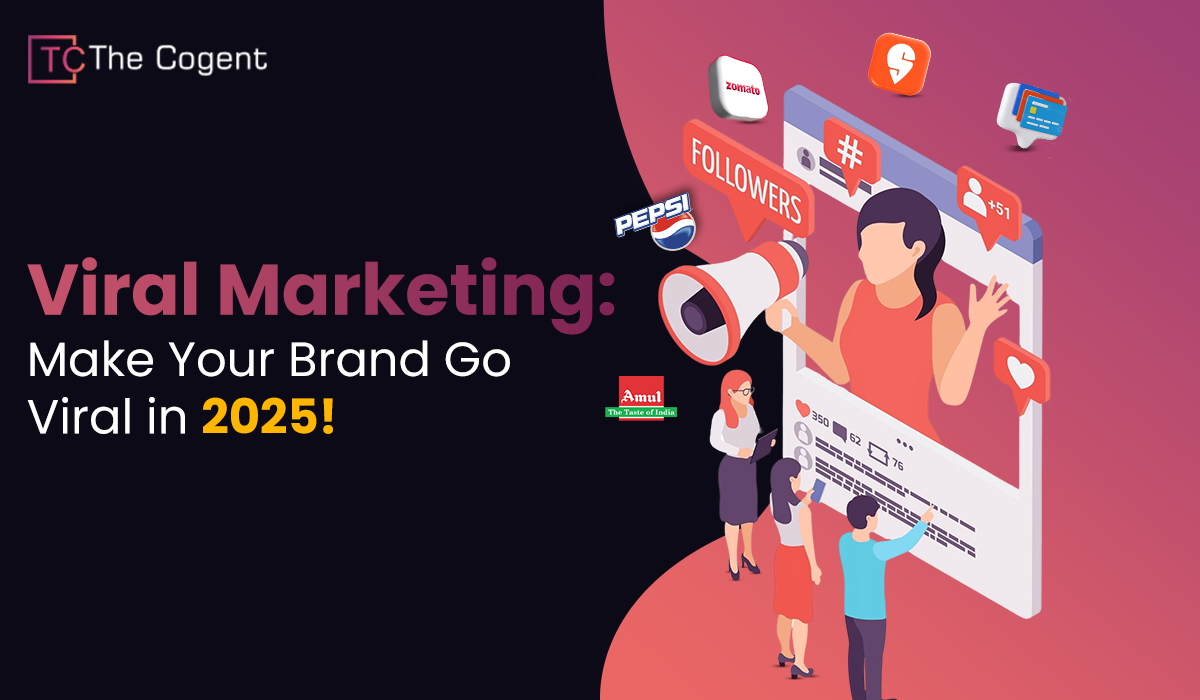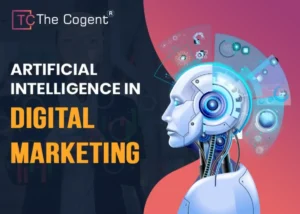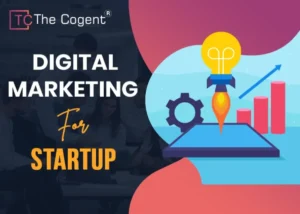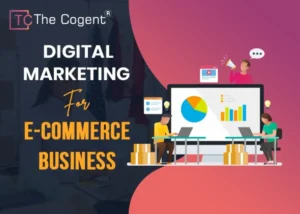Introduction
Viral marketing is a modern form of marketing that relies on social sharing, word-of-mouth, and engaging content to express a brand. In this digital age, millions of users are always online, making a big impact when a viral campaign is executed to express a brand awareness, create engagements, and build sales at an unprecedented scale. But what makes a campaign go viral? Emotional triggering, compatibility to be shared, relatability, and proper timing are the keywords. Viral marketing can either take the form of a comic sketch, a thought-provoking challenge, or a trending hashtag, yet provide expansiveness in reach and sustainable brand impact, hence elevating the game in the marketing realm nowadays.
1. Understanding Viral Marketing
Viral marketing is a digital strategy that depends on rapid sharing and word-of-mouth to spread a brand’s message, which can be considered an organic event in contrast to traditional marketing, which views an ad as a one-off message interrupted. Unlike traditional pay-per-click advertisements and other” push” promotional efforts, viral marketing thrives upon the engaging nature of the content that pulls the attention of the audience toward the brand and pushes them to spread it”. Another point in contrast to traditional marketing is that it involves continuous funding for visibility.
Whereas, once a viral campaign takes its wings, it grows exponentially requiring minimum effort. Another point to contrast with traditional marketing is that, while planning, you have to invest capital time and again to keep your communication visible, while a viral campaign grows exponentially with minimal effort once ready to take off. And surely, social media is a facilitator in this aspect, because it provides instant global reach, interaction with the audience, and platforms like Facebook, Instagram, Twitter, and TikTok that broadcasts content with light-speed.
2. Key Components of a Viral Marketing Campaign
A successful viral marketing campaign isn’t just about luck; it is built upon some key components that capture attention, evoke emotions, and encourage sharing.
- Emotional Appeal: Content that evokes humor, nostalgia, surprise, or inspiration strongly touches the sentiments of the audiences, making it much more shareable.
- Strong Storytelling: A captivating narrative entails engagement and hence makes the brand message memorable.
- Easily Shareable: Simple content, which is able to be consumed in small bits, like videos, memes, or challenges, spread fast across platforms.
- Clear Call-to-Action: A recommendation for users to like, share, tag, or participate compounds organic growth.
- Leveraging Trends & Challenges: Riding the current trends allows relevance and boosts visibility.
3. How Viral Marketing Works: The Process
A successful viral marketing campaign involves a strategic process to maximize the reach and engagement.
Steps:
1. Creating Highly Engaging Content: At the heart of virality lie emotionally stimulating, thought-provoking, or entertaining content. Videos, memes, and challenges are most effective.
2. Choosing the Right Channel: By selecting the suitable channels, such as Instagram, YouTube, TikTok, or Twitter, the content is more often going to get in front of the target group of people.
3. User Participation: Campaigns using UGC or challenges allow for much greater engagement.
4. Using Influencers & Brand Advocates: Their help should extend the reach and credibility of the marketing campaign.
5. Analyze and Amplify: Monitoring the metrics and using paid promotions and retargeting are critical to helping maintain the momentum.
4. Famous Indian Viral Marketing Campaigns
a) Zomato’s Quirky Social Media Posts
Whether it’s a trending meme or an entertaining pun, Zomato’s social media marketing strategy keeps its users engaged and entertained! It has, over time, mastered the use of these one-liners, relatable memes, and fun-filled push notifications. It entertains its audience through quirky marketing that makes every craving go viral.
b) Amul’s Topical Advertisements
Amul, with decades of iconic and witty topical current affairs advertisements, has made it into viral marketing, with an overarching view of combining humor, social commentary, and brand messaging in the catchy visuals. It is consistent enough to engage the audience and have the conversation started instantly, hence reiterating the idea that creativity and relevance will never die.
c) Cred’s Retro-themed Ad Campaigns
CRED’s a nostalgic ad campaign geared toward Bollywood stars and cricket legends in unexpected, humorous roles: their ads speak a theme that appeals to everyone and goes viral because it combines good stories with humor and elements of surprise. Whether it is Rahul Dravid as a dhobi or Madhuri Dixit doubling in with credit score ads, it stays with you!
d) Swiggy’s Voice-Activated Campaign
You’ll love Swiggy’s voice-activated campaign, Instamart, What’s in Your Fridge?. The ingenious campaign converted mundane moments inside kitchens into crowd-pleasing fun. Users are encouraged to perform a voice search of items found in their kitchen, which gets people into the trend and engaged with the brand. Fun, fresh, and highly shareable—a campaign where innovation did its magic to create virality!
e) Pepsi’s ‘Swag Se Karenge Sabka Swagat’ Campaign
Pepsi’s Swag Se Karenge Sabka Swagat CampaiGn pepsies high energy featuring Ranveer Singh interlaced Bollywood a music dance crazes to connect the youth culture. Its nifty beats, vibrant visuals, and swank choreography converted the ad into a viral hit!
5. Benefits of Viral Marketing for Brands
In voyaging marketing, the enormous benefits can give brands a leg up to boost their reach and power into the digital arena. One major benefit would be brand awareness since one successful viral campaign can reach millions of people almost within seconds and, thereby, significantly enhance visibility. The second advantage would be the cost-effectiveness, as a viral campaign primarily relies on organic sharing rather than huge advertising costs. Thirdly, it encourages high-engagement and loyal audiences through active and authentic interactions to establish deeper emotional ties with consumers. Successfully going viral gives brands the much-needed edge over competitors; it allows them to be ahead in time while building continuous credibility and recognition in their industries.
6. Challenges and Risks of Viral Marketing
As much as viral marketing is that tool for building brands, she still has got her own set of challenges and risks. Chief among these is the unpredictability of virality; there is no dependable formula that guarantees a piece of content to go viral, and so, even the best-laid plans could fail in a campaign. Then there is the fear of negative backlash, where a piece of content that is seen to be controversial or misinterpreted may affect one’s reputation, thus calls for crisis management. And the third one is fairly a double-edged sword-short-lived trends demand ever-changing innovation so that, indeed, viral content can easily lose its relevance. While viral marketing does have the grandest of rewards, the brands are expected constantly to strategize toward maximizing the impact while minimizing potential risks.
7. How to Create Your Own Viral Marketing Strategy
A deep understanding of audiences is crucial along with the content designed to get genuinely involved and a good distribution. It starts with an audience research to know what these people like, how they behave, and what can make them hype themselves about it. The content should be relatable, emotionally charged-whether humor, inspiration, or surprise-emotion triggers sharing. The influencer and user-generated content (UGC) can boost the usage and credibility power by leaps and bounds. Monitor performance metrics such as engagement, shares, and conversions, and improve along the way. A well-launched viral campaign can increase awareness and engagement of the brand and impact the effectiveness of such actions into higher levels.
Conclusion
In the world of digital marketing, viral marketing is a real revolution that gives brands the chance to reach huge audiences, drive higher engagement, and grow in an effective way. Creating emotionally engaging and thus shareable content, interacting with influencers and trends and enticing user-generated content allows brands to escalate their visibility. Still, achieving success demands a strategic plan, understanding the audience, and the ability to adapt to shifting trends. For any brand that wishes to go viral, the fundamentals include experimenting without fear, being creative, and consistently analyzing what clicks with the audience. While every campaign might not go viral, a regularly consistent, innovative approach could widen the chances for a campaign to make an unyielding impact on the digital stage.
FAQs:
Of course, it works in most cases, if the audience is somehow engaged and creativity is evident, and a choice of the right platform is made. While some sectors grow quite well with viral content, others may apply a more strategic method to organic reach.
Viral marketing brings a brand enormous brand visibility, cheaper advertising, an increased audience interaction level, and organic reach; all these assist any company to gain fame, increase sales, and set up a long-lasting brand in mind.
It has unpredictable outcomes, including affecting a brand negatively; with many fads only lasting a short time, this requires a lot of room for innovation to keep the folklore afloat while also carefully managing the brand’s reputation.
Small businesses can create relatable, shareable content, use social media trends, collaborate with influencers and user-generated content, and engage actively with audience members in order to increase the chances of virality.
Popular social media platforms such as Instagram, TikTok, Youtube, Twitter, and Facebook always come in handy for viral content; they bring a wide reach with full features capturing real engagement to audience members who jump on any momentum-driven trend.



